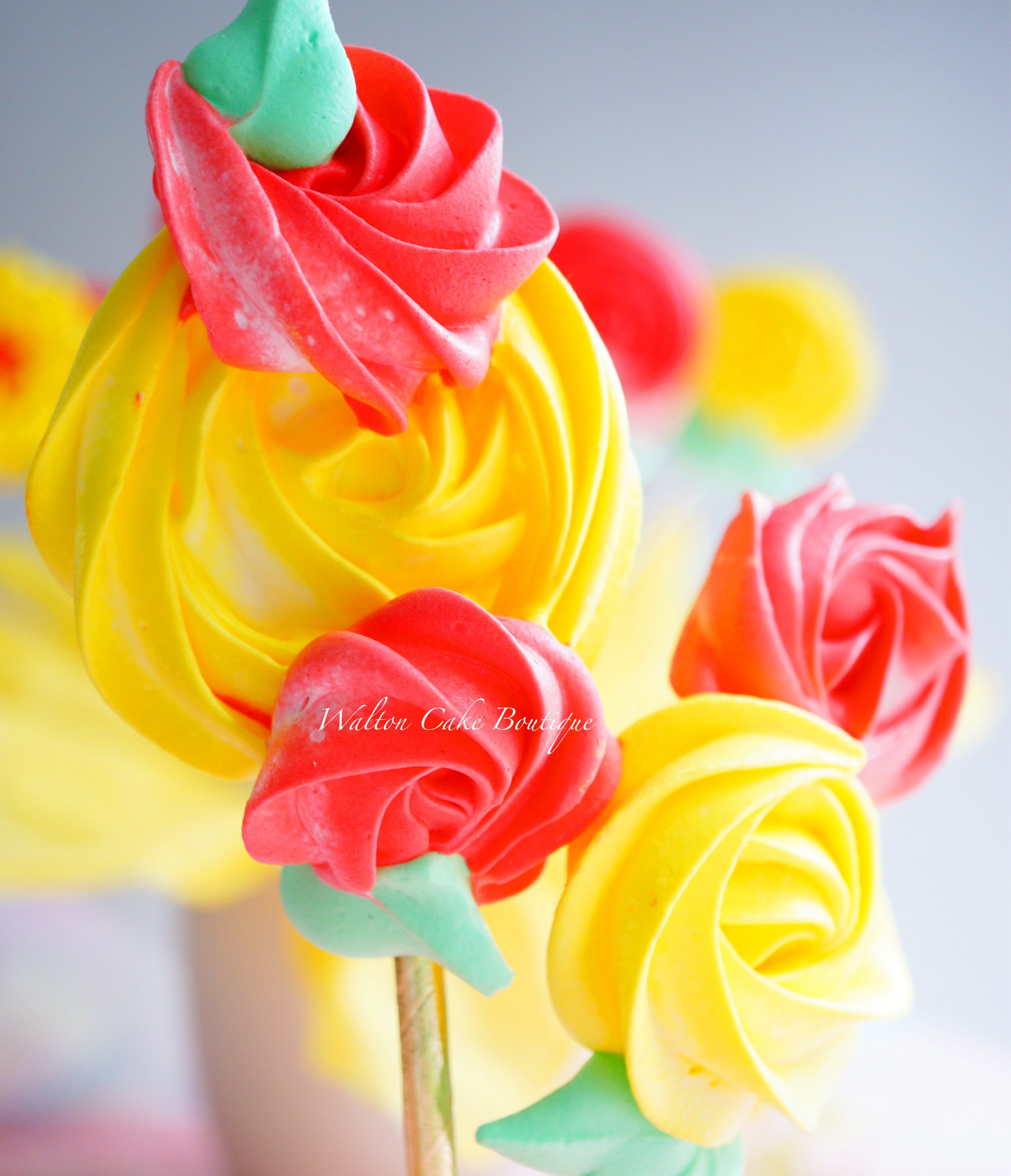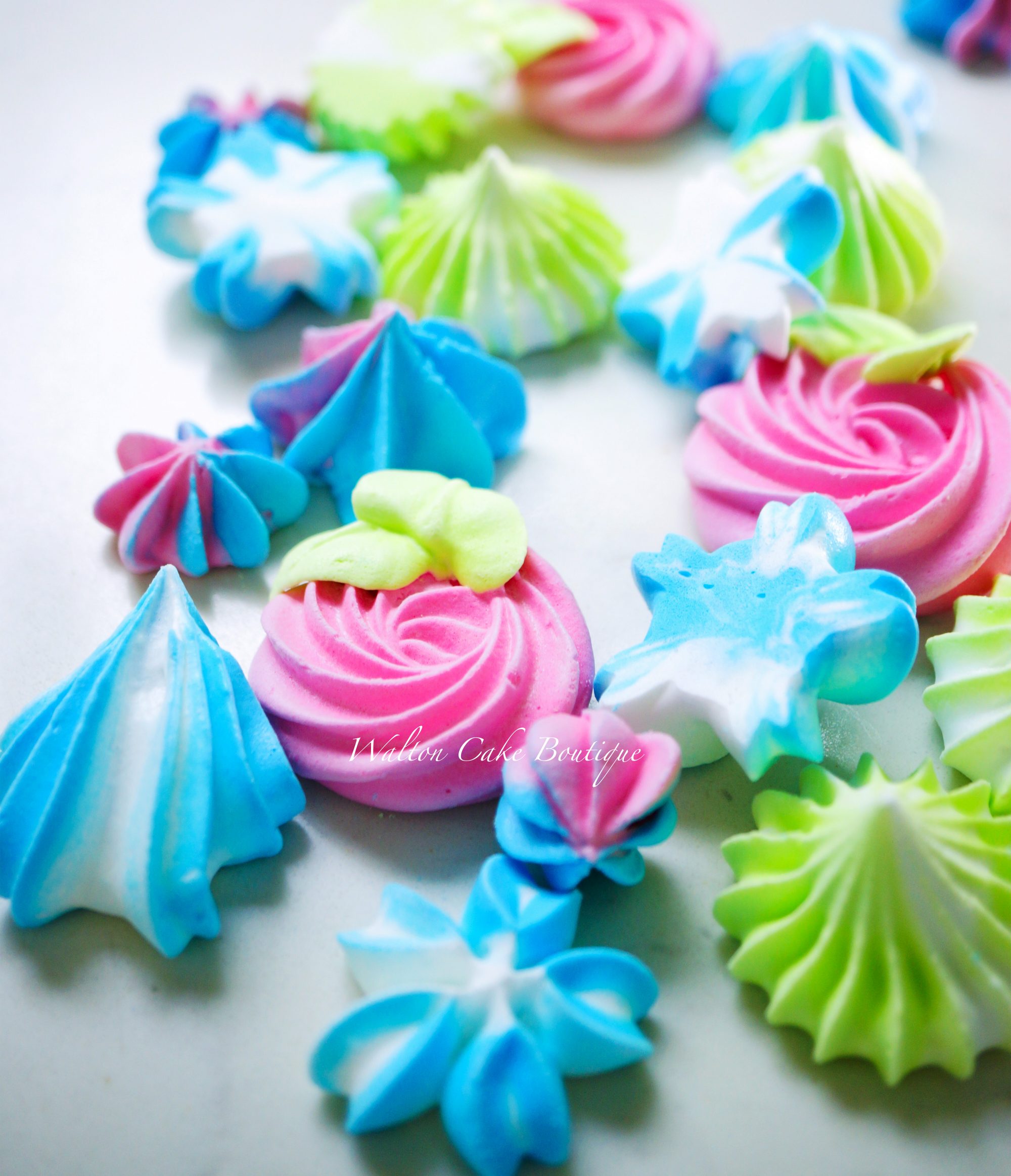by Katherine Walton on May 18, 2022 7 Comments


The non-sticky Italian Meringue that’s crunchy on the outside and soft inside when baked.
Meringue cookies are one of those tricky treats that are hard to master often encountering problems when baking them. But imagine being able to make meringues that don’t crack, maintain their colour and shape but most importantly don’t go sticky after baking. This Italian meringue is the most stable out of all the meringues and it tastes amazingly not too sweet.
These cookies are crunchy and dry on the outside but remain soft on the inside. The colours don’t fade or change as these meringues are baked at a low temperature. These meringues will rarely crack while baking and will stay dry and firm on the outside making them perfect for any type of meringue creation.
How are the ingredients measured in this recipe?
In this recipe and in all of my recipes I provide all ingredients in grams and in mL (millilitres) where applicable. I also provide the ingredient quantities in METRIC cup measurements. However, be aware that cup measurements and spoon measurements vary in different countries. Therefore, I highly recommended the use of scales where applicable to measure ingredients to achieve exactly what the recipe intends.
What is caster sugar and can I substitute it in this recipe?
Caster Sugar is also known as super fine granulated sugar. Not to be confused or replaced with icing sugar also known as powdered sugar and confectioners’ sugar. You may replace the caster sugar with standard granulated white sugar in this Italian Meringue recipe as the sugar is dissolved in a liquid.
How to separate egg whites from egg yolks?
It is best to separate the egg whites from the egg yolk when the eggs are cold. Then leave the egg whites in a bowl covered to bring to room temperature.
Do I need to use a food thermometer?
I recommend the use of a digital food thermometer in order to know if the temperature of the sugar syrup has reached 115 degrees Celsius (239 Fahrenheit), which is the soft ball stage the sugar syrup needs to reach.
What is the recommended baking time and temperature for the meringues?
Baking time can vary from 1 hour for small meringues to 2 hours for larger pieces. A longer baking time will yield drier merengues. Note that a longer baking time combined with a higher than recommended baking temperature may change and fade the colour of the meringues if using food colouring. Also, if you are after keeping your meringues white bake for only 1 hour at a low temperature of 90 degrees Celsius (190 Fahrenheit). Keep in mind that all ovens vary and you may have to test different baking times and temperatures, as well as tray positions in your oven to achieve the best result for your meringue cookies.
After baking, you may leave the meringues in the oven until they have completely cooled or you can remove them as soon as they have finished baking. Leaving them to cool in the oven will yield drier, crunchier meringues.
How to store this Italian Meringue and what is its shelf life?
Meringue cookies should be stored in an airtight container for up to a week in a dry place. This meringue can also be used without baking and used as a topping to decorate cupcakes and other desserts. If using as a fresh topping, this meringue should be stored in the fridge for up to two days. Please note that the fresh meringue will naturally start to separate, therefore it is best to decorate your dessert with the fresh meringue immediately after making and then store the dessert in the fridge.
Comments are closed.
Hello,
Can I use this to frost/icing a chiffon cake?
Hi ☺️, you certainly can. It’s light and fluffy when used as a topping. A great accompaniment. It wouldn’t work very well as frosting a cake with buttercream for example but as a simple covering you can definitely use it.
Hi, Excuse me, how can I download the recipe clip?
Hi ☺️, the video is on my YouTube channel. However you should be able to watch it on my website by clicking on the play button. The video is not for downloading.
Hi! I live in Mumbai and right now it’s hot and HUMID and this recipe still worked great!!! Only one weird thing happens…sugar crystals bubbled out from the inside of the meringue discs to the top and out from underneath as well. What could’ve caused that? Also, most receipes ask for double the amount of sugar than egg whites but this one asks for much more. Is that what makes it so durable?
Hi 😊! Thank you so much for trying my recipe. The bubbles you see can sometimes appear on meringues from undissolved sugar granules. In this case I would say it is possible from the powdered sugar. You can reduce it or minimise it by mixing the meringue at the end for an extra few minutes to ensure the powdered sugar is well dissolved in the meringue. It can also sometimes occur if the meringues have sat on a baking tray resting before going into the oven. Also, the extra sugar (the powdered sugar) makes this recipe more stable and resistant to humidity if well incorporated. Let me know how you go if you try them again.